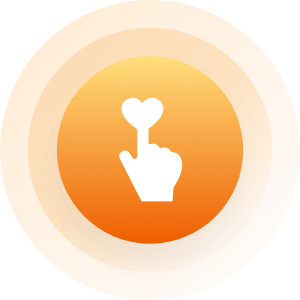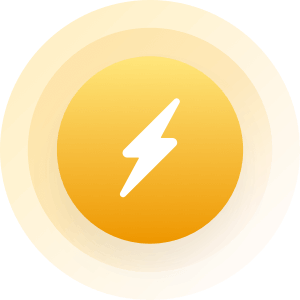| Topic: Coffee...anyone? | |
|---|---|
|
Can Coffee Offset Liver Damage from Alcohol?
There was a study of more than 125,000 people who drank coffee. The study, published recently, showed that one cup of coffee a day cut the risk of alcoholic cirrhosis of the liver by 20 percent. Four cups a day reduced the risk by 80 percent. It's not known yet why coffee protected livers in this study. Even "social drinkers" can develop cirrhosis, a condition that causes irreversible damage to the liver. Whether you get cirrhosis depends upon the amount of alcohol you drink and a predisposition for the condition. If you drink a lot of alcohol, you will hurt your liver. However, you will not necessarily get cirrhosis. You have a one-in-three chance of getting cirrhosis if you drink 8 to 16 ounces of liquor a day (or the equivalent in other alcoholic drinks) for 15 years or more. More men than women get cirrhosis. There is a theory that more men get cirrhosis because they're heavier drinkers. Women can't tolerate as much alcohol as men can. Studies show that a much higher percentage of women, consuming less alcohol than men, suffer from cirrhosis. In the United States, excessive alcohol consumption is the single greatest risk factor for cirrhosis. Chronic infection with the hepatitis C virus is the second leading cause of cirrhosis. The liver, which is located in the upper right side of the abdomen, is the largest organ in the human body. It weighs about three pounds and is--believe it or not--about the size of a football. You cannot live without a liver. The liver is a multipurpose organ that performs hundreds of tasks. Among its functions are the digestion of fats, removal of harmful substances from blood, production of cholesterol, control of infections and the coagulation of blood. In cirrhosis of the liver, scar tissue replaces healthy tissue; this blocks blood flow through the liver and prevents it from working efficiently. At the onset of cirrhosis, there may be no symptoms. As the liver deteriorates, the following may occur: internal bleeding, fluid retention in the legs and feet, bruising, yellow skin and eyes, fluid in the abdomen, itchy hands and feet, dark urine, loss of appetite and weight, nausea, fatigue, and red spider veins. Although liver damage from cirrhosis is irreversible, treatment can help prevent more damage and reduce complications. Giving up alcohol is the primary treatment. Improving nutrition is often part of treatment, too. A doctor can diagnose cirrhosis through symptoms, a medical history, a physical exam, and tests. Tests that are often used in diagnosis include a computerized axial tomography (CAT) scan, ultrasound, magnetic resonance imaging (MRI), or a scan using a radioactive substance that highlights the liver. A doctor might look at the liver using an instrument that is inserted into the abdomen. A liver biopsy can confirm a diagnosis. consumersaffairs.com |
|
|
|
|
|
Edited by
sweetestgirl11
on
Fri 03/02/12 06:45 AM
|
|

Shannon!  well we have a great start to an awesome coffee klatch here! well we have a great start to an awesome coffee klatch here!
and I meant to tell carra that once you find your photo on bucket click on it - then click on SHARE - then choose the find link code tab - then choose img 
|
|
|
|
|

Shannon!  well we have a great start to an awesome coffee klatch here! well we have a great start to an awesome coffee klatch here!
and I meant to tell carra that once you find your photo on bucket click on it - then click on SHARE - then choose the find link code tab - then choose img 
I will still figure that out, thanks sweetestgirl11 |
|
|
|
|
|
Edited by
sweetestgirl11
on
Fri 03/02/12 06:53 AM
|
|

|
|
|
|
|
|
- I am having hard time posting pictures really...thanks! Click on the 'Quote' link at the bottom of this post. You will see that a picture has this code: [*IMG]link address here[*/IMG] (withOUT the asterisks, of course.) 
Photobucket, as a Host, is what most people use here. You would go to Photobucket.com (FREE to use) and set up an account. Then, when you UPLOAD a picture, they actually give you the entire code to paste into here. |
|
|
|
|
|
Well I live in Seattle Wa ... coffee is my love! I will not cheat on my coffee!! My coffee is devoted to me as I am to it. I will have my coffee everyday for the rest of my existence.

|
|
|
|
|
|
- I am having hard time posting pictures really...thanks! Click on the 'Quote' link at the bottom of this post. You will see that a picture has this code: [*IMG]link address here[*/IMG] (withOUT the asterisks, of course.) 
Photobucket, as a Host, is what most people use here. You would go to Photobucket.com (FREE to use) and set up an account. Then, when you UPLOAD a picture, they actually give you the entire code to paste into here. thanks will do that... |
|
|
|
|
|
The History of White Coffee
White coffee was developed more than 50 years ago in "Lian Thong", one of the oldest traditional Chinese coffee shops in Ipoh, Malaysia. The owners of "Lian Thong" were passionate about making quality coffee. They came up with unique idea through many researches and testing, and developed a special blend of aromatic coffee called "White Coffee". They started to serve the newly introduced white coffee to its customers. The increase of white coffee demand caused more coffee shops and restaurants to carry white coffee. Hence on, for the past ten years, "White Coffee" has become extremely popular among many local coffee enthusiasts and has received great approval from the overseas market. This image has been resized. Click this bar to view the full image. The original image is sized 570x328. Image: The origin of White Coffee in Ipoh, Malaysia. Traditional White Coffee Both white and black coffees are actually produced from the same species of coffee beans, usually Robusta or Arabica. The main difference is in the way the coffee beans are roasted. To produce traditional 'black' coffee, the coffee beans are roasted with sugar and margarine. For white coffee, the beans are roasted with only margarine. Without sugar, the roast is not as dark and hence termed as 'white' coffee. Dapuri's White Coffee Through decades of research and development, white coffee has been transformed to fit the modern lifestyle of coffee lover today. Therefore, Dapuri combines the original recipe with modern production and packaging process to provide the best-in-class Malaysian white coffee. Dapuri is dedicated to taking the coffee lover’s satisfaction to the next level. http://www.dapuri.com/ |
|
|
|
|
|
Top-15-Coffee-Effects-on-Your-Health
Some are trying hard to show the beneficial effects that coffee has on our health, others see it as the devil's beverage. Others say it's rather a bogus. Read on and decide for yourself who's right! 1. Some say that the energy boosting effect of the morning coffee is only in your mind and you should sleep more. The caffeine eases withdrawal symptoms accumulating overnight, but does not make people more alert. Only people who do not regularly drink coffee will get a 'push-up' from caffeine, while the British Coffee Association insists that regular drinkers do feel more alert. Regular coffee drinkers swear that their morning caffeine wakes them up, and in case they don't take it, they feel they have no energy and will surely be less efficient in their activities. Researches show that a first caffeine intake does not make the individuals more alert than those who do not drink coffee are. Others insist that moderate coffee consumption of four to five cups per day is perfectly safe for the general population and has a beneficial effect on alertness and performance even in the case of regular coffee drinkers. Caffeine, the main active chemical of coffee, blocks adenosine, a chemical that makes you naturally drowsy, increasing concentration and reaction speed. But the long term effects can be really tricky. Once the temporary stimulation stops, the brain cells start needing caffeine for stimulation and a sudden neural sluggishness installs. 2. Caffeine has been found to prevent cognitive decline in the elderly women. Women aged 65 and older who consumed over three cups of coffee (or the same caffeine levels in tea) daily scored better over time on memory tests than women who drank one cup or less of coffee/tea daily did. The memory benefits of the caffeine rise with age - coffee drinkers being 30 % less exposed to memory impairment at age 65 and 70 % less over 80. Still, caffeine consumers did not have lower rates of dementia. Caffeine seems to slow the dementia process rather than prevent it. Why caffeine has a slightly different effect on women than it does in men is a puzzle. Caffeine has been found also to protect against Parkinson's disease and depression, and this could be linked to its inhibiting effect on adenosine receptors. Depression is eased because caffeine increases dopamine, the "happy feeling" hormone, in your brain. 3. Italian researchers found that coffee defends against blepharospasm, an involuntary eye spasm which makes patients blink uncontrollably, which may turn into a severe vision impairment, and in severe cases, this can make the patients functionally blind (despite intact eyeballs) as they cannot impede closing their eyes. One to two cups daily have this effect. The blepharospasm onset age was delayed by coffee drinking, with 1.7 years for each extra daily cup, and this could be due to caffeine's effect on the adenosine receptors. 4. Everybody knows the laxative effect of coffee. Brewed coffee also contains soluble cellulose fibers, which help the body absorb vital nutrients, keep a lid on cholesterol and fight constipation. The amounts are of 0.47-0.75 grams of fiber per 100 ml. Freeze-dried coffee came out on top. Men comsume on average about 38 g of fiber a day and women around 25 g. A 240 ml cup of coffee could contain as much as 1.5 g of fiber (3.2 cups means 5 g of fiber). 5. High coffee consumption (more than three cups per day for years) increases loss of bone mineral density. Caffeine is a mild diuretic, speeding up the urination cycle, but "steals" calcium which is lost through urine. Long term, heavy caffeine use leads to a rapid development of osteoporosis. 6. The effect of coffee on the cardiovascular health is controversial: some say it's good, others that it is a risk factor. Caffeine blocking adenosine constricts the brain's blood vessels. The heart beats rate increases, muscles tighten, the blood pressure booms, blood vessels near the surface constrict and more blood flows to the muscles. Researches show that blood pressure and heart rate spurred in healthy sedentary adults drinking two cans of caffeine containing drinks daily by up to 11 %. But if you're going to practice sports, the heart beats can increase up to a dangerously high level, while triggering extremities shivering and nausea. On the long term, the unnatural heart racing is unhealthy, and can trigger heart conditions. 7. Caffeine causes sleep disturbances. Don't even think about drinking coffee or other caffeine containing beverages before sleep. And remember that the alkaloid needs 12 hours to be completely eliminated from your body. 8. A new research has found that coffee could cut the risk of skin cancer. 6 cups of caffeinated coffee daily lowered the likelihood of developing skin cancer by 35 %, while 2-3 cups lowered it by 12 %. Caffeine is believed to impede cells dividing in the tumor, or to work as an antioxidant. One research found coffee and exercising fight against sun-induced skin cancer by 400 %. Other researches suggest that coffee could be beneficial also against breast cancer. 9. Coffee fights gout symptoms! The beverage lowers uric acid levels on short term, easing the most common and excruciatingly painful inflammatory arthritis in adult males. Drinking 4-5 cups of coffee daily significantly decreases the risk of gout by 40 % and over 6 cups per day by 59 %. Tea (which contains caffeine) has no impact on gout incidence, thus other chemical than caffeine induces this effect; the main suspected being the phenol chlorogenic acid, a powerful antioxidant. 10. Two cups of coffee reduce significantly post-gym muscle pain. Caffeine consumed one-hour before going to the gym induces a 48 % decrease in pain; those who drink caffeine before the near-maximum force test have 26 % drop in soreness. Caffeine boosts endurance, and one study discovered caffeine to decrease pain during moderate-intensity cycling. By blocking the receptors for adenosine, released in response to inflammation and implied in pain sensation, coffee could have this effect. Caffeine seems to be more efficient than conventional pain and soreness reliever drugs, like naproxen (the active ingredient in Aleve), aspirin and ibuprofen. 11. Caffeine mixed with acetaminophen (paracetamol), one of the most common painkillers used in the US and Europe could harm your liver. The caffeine was discovered to triple the quantity of a toxic byproduct, N-acetyl-p-benzoquinone imine (NAPQI), produced by the enzyme that breaks down the acetaminophen. Still, the effects would be determined by the daily consume of 20-30 cups of coffee. 12. Caffeine gets women in the mood for sex, especially in moderate amounts and when the women are not heavy drinkers. The chemical is also known to increase excitability in men. Interestingly, female rats that received the middle dose of caffeine had quicker return visits to the males than the highest dose tested. 13. Researches show that the consume of unfiltered coffee increases the level of cholesterol. Why? Because coffee contains a substance called cafestol which triggers the rise of cholesterol levels. The cafestol blocks a receptor in an intestinal pathway crucial for cholesterol regulation, and is the most potent food chemical to do this. By pouring hot water over the ground coffee, the cafestol is extracted. The same thing happens when the ground coffee is boiled in water by several times, like in the case of Turkish coffee or Scandinavian brew, or a paper filter is employed, like in French coffee. If the coffee is made without the filter, the cafestol remains in the prepared beverage. A cup of unfiltered coffee contains up to 4 milligrams of cafestol that can raise the cholesterol level by 1 %. The espresso coffee contains cafestol, as it is not prepared with a filter. Still, this type of coffee can increase less the cholesterol if you use a small cup. Less espresso means less cafestol, probably just 1-2 mg per cup. Still, 5 cups of espresso can raise the cholesterol by 2 %. Decaffeinated coffee contains cafestol, since removing caffeine does not influence the other compound. 14.Coffee was found to remove 78-90 % of the heavy metals dissolved in the tap water, like lead or copper, because the ground coffee has the molecules not electrically charged or negatively charged, attracting the heavy metals, which are positively charged. Stronger coffee removes a higher amount of the toxic heavy metals. Instead, tea removes just one third of the same amount of lead and has not effect on the copper. 15. Coffee can kill you! Just as any other drug, in small amounts, caffeine (and coffee) is a stimulant. But the coffee plant synthesizes the alkaloid with the purpose of killing�its natural consumers. The grazer eating too much coffee will die. We, too, may be killed. The uncontrolled heart beats are the prelude of a heart attack. Over 400 mg of caffeine (found in 4-5 cups of brewed coffee) can cause caffeine intoxication. Some even snort caffeine powder, which results in a more rapid and intense reaction. The symptoms are just like those induced by any other drug: restlessness, nervousness, excitement, insomnia, face flushing, increased urination, gastrointestinal disturbance, muscle twitching, a rambling flow of thought and speech, irritability, irregular heart beat, and psychomotor agitation. Deadly coffee doses have not been tested on people, but in rats the average lethal dose (LD50) of caffeine is 192 mg/kg: 50 % of the rats died after consuming this quantity. In humans, however, the value would be linked to weight and each one's sensitivity, to about 150 to 200 mg/kg of body mass. So, you have to drink 80 to 100 cups of coffee very quickly to die... This also varies with the coffee variety, and cup size, as this determines how much caffeine enters your body. Actually, cases of death caused by coffee drinking have not been reported yet (at least from rapid drinking; the chronic effects are another story) but caffeine pills (just 2 g) are much more effective and have been proven lethal. news.softpedia.com |
|
|
|
|
|
What is GREEN coffee?
Green coffee bean extract is a new ingredient on the market. Green coffee bean has strong anti-oxidant properties similar to other natural anti-oxidants like green tea and grape seed extract. Green coffee beans have polyphenols which act to help reduce free oxygen radicals in the body. Green coffee bean extract is sometimes standardized to more than 50% chlorogenic acid. Chlorogenic Acid is the compound present in coffee which has been long known as for its beneficial properties. This active ingredient makes green coffee bean an excellent agent to absorb free oxygen radicals; as well as helping to avert hydroxyl radicals, both which contribute to degradation of cells in the body. Green coffee bean extract is made from the green beans of the coffea Arabica plant. There are two types of coffee plants, arabica and robusta... the arabica is higher in quality and higher in chlorogenic and caffeic acids, two primary compounds responsible for anti-oxidant activity. Boiled coffee drinks contain cafestol which is associated with the negative effects of using coffee as a stimulant, this is not present in green coffee beans or the extract. http://www.raysahelian.com/greencoffee.html |
|
|
|
|









